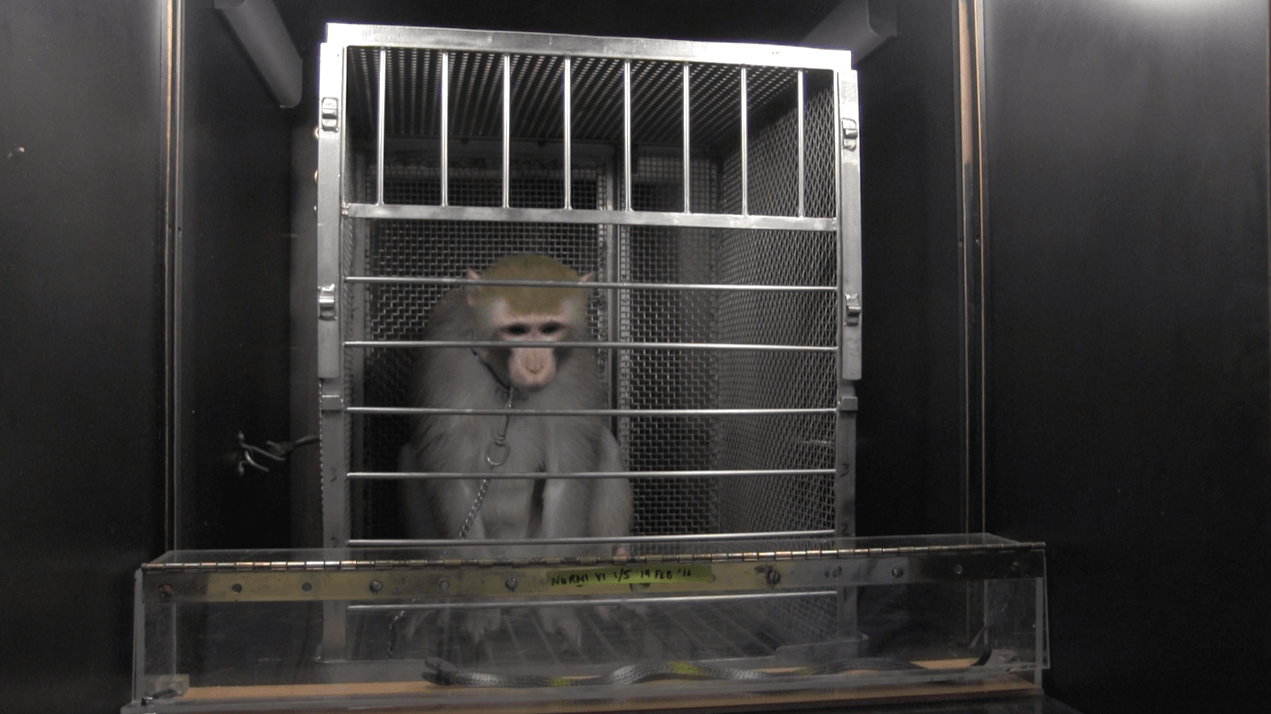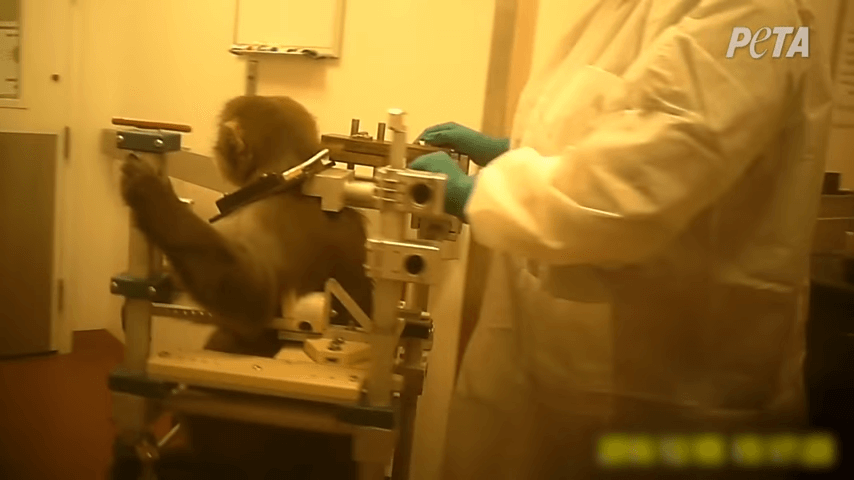10 Horrible Things NIH Does to Monkeys With Your Tax Dollars
Want to know what’s wrong with conducting experiments on monkeys? PETA has obtained shocking video footage of so-called “scientists,” led by National Institutes of Health (NIH) experimenter Elisabeth Murray, terrifying captive monkeys with fake snakes and spiders. These cruel and pointless tests on animals have cost U.S. taxpayers more than $36 million, yet not one single treatment or cure for human illnesses has come from them in 30 years.
Here Are 10 Things You Need to Know About These Twisted Experiments on Monkeys:
1. Murray keeps nearly 100 monkeys in her laboratory at any given time.
These monkeys are deliberately terrified with realistic looking snakes and spiders. They are also subject to another fear-inducing test called “The Human Intruder Test,” in which an unfamiliar, threatening human stares at the monkeys, deliberately terrifying them.
2. These monkeys are forced to endure multiple invasive surgeries, leaving them permanently brain damaged.
Watch how Murray terrorized one of her victims, named Murphy:
3. Many monkeys in this laboratory have “head posts” surgically implanted into their skulls using screws and cement.
This allows experimenters to force the monkeys to keep their heads completely still for hours at a time. It takes a month for monkeys to heal from this surgery, but the head posts remain in their skulls for the rest of their lives.
4. Monkeys also have “chambers” (holes) cut into their skulls, so experimenters can inject drugs directly into their brains whenever they want.
Sometimes the experimenters accidentally hit a blood vessel, causing the monkeys’ brains to bleed. Experimenters must occasionally perform additional surgeries to scrape away bone that has grown into these chambers.
5. Experimenters also inject toxins into the monkeys’ brains, sometimes causing erratic heart beats or even respiratory arrest.
6. Other monkeys have portions of their brains sucked out of their heads.
For some monkeys, the experimenters will damage multiple regions of their brain, requiring multiple surgeries. Sometimes the experiments don’t damage the part of the brain they meant to, so the monkey must endure even more surgical procedures.
7. Murray forces many of her monkeys to live all alone, even though she knows this causes them extreme psychological harm.

She does this because the brain-damage she causes these monkeys makes it impossible for them to have normal social interactions with their peers.
8. For some experiments, the monkeys are forced to wear a collar and are strapped into a “restraint chair,” sometimes for hours, similar to the one seen below:

Other monkeys in the laboratory are sometimes forced to lie awake, with their bodies and heads restrained, in an fMRI scanner for up to five hours at a time.
9. For some experiments, Murray and her laboratory staff deprive the monkeys of water, so they will be thirsty enough to drink bitter tasting liquids like citric acid and quinine.
In other cruel and pointless tests, experimenters blow puffs of air into the monkeys’ eyes to see how they react to “aversive” events.
10. After torturing these monkeys for years, the experimenters in Murray’s laboratory kill them.
Then, they remove the monkeys’ brains and dissect them.
You Can Help Stop Monkeys From Suffering in Experiments
You can make a difference for these animals. Join the tens of thousands of compassionate people who’ve already taken action to demand that NIH stop experiments on monkeys and immediately shut down Murray’s lab.
This piece was co-written by PETA Neuroscientist Dr. Katherine Roe.

